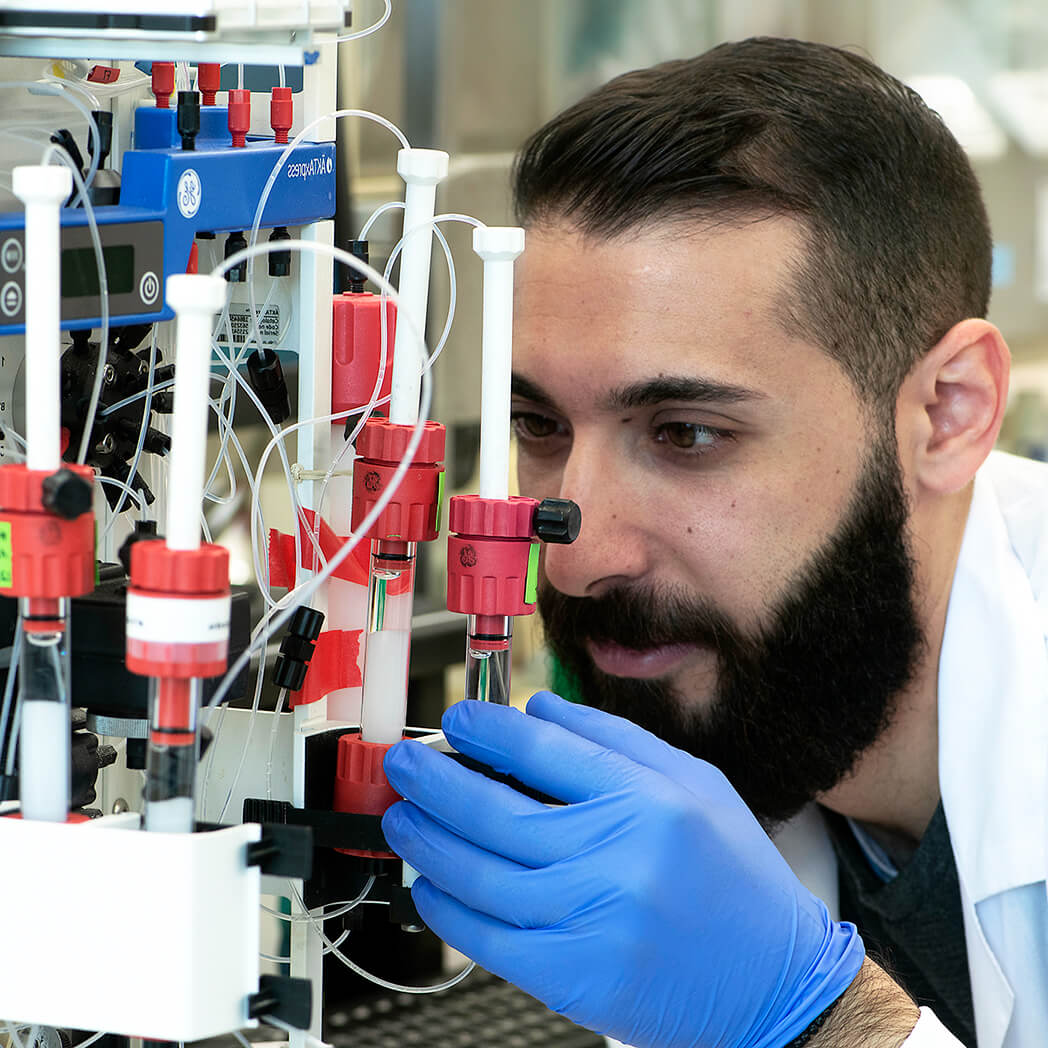Overview
Cat #:
AGR-021-PE
Alternative Name Glucagon-like peptide 1 receptor, GLP-1 receptor
Lyophilized Powder yes
Type: Polyclonal
Host: Rabbit
Reactivity: H, M, R
ImmunogenPeptide (C)KYLYEDEG(S)WTRNS, corresponding to amino acid residues 288-301 of rat GLP1R (Accession
P32301). 2
nd extracellular loop.
Accession (Uniprot) Number P32301 Gene ID 25051
Peptide confirmation Confirmed by amino acid analysis and mass spectrometry.
Homology Rat, mouse, human - 13/14 amino acid residues identical.
Purity Affinity purified on immobilized antigen.
Form Lyophilized powder. Reconstituted antibody contains phosphate buffered saline (PBS), pH 7.4, 1% BSA, 0.05% NaN3.
Isotype Rabbit IgG.
Label R-Phycoerythrin (R-PE).
Storage before reconstitution The antibody ships as a lyophilized powder at room temperature. Upon arrival, it should be stored at -20°C.
Reconstitution 15 µl or 50 µl double distilled water (DDW), depending on the sample size.
Antibody concentration after reconstitution 1 mg/ml.
Storage after reconstitution The reconstituted solution can be stored at 4°C, protected from the light, for up to 1 week. For longer periods, small aliquots should be stored at -20°C. Avoid multiple freezing and thawing. Centrifuge all antibody preparations before use (10000 × g 5 min).
Standard quality control of each lot Western blot analysis (unlabeled antibody, #AGR-021), and direct flow cytometry (labeled antibody). Applications: FC, LCI
Scientific background Glucagon-like peptide 1 (GLP-1) is a hormone secreted by the intestine following a meal1. This hormone is known to enhance the secretion of insulin, important glucose blood level regulation2,3. In pancreatic β-cells, other than stimulating insulin secretion, GLP-1 action is also important for β-cell mass expansion2.
GLP-1 exerts its biological functions through Glucagon-like peptide 1 receptor (GLP-1 receptor), a member of the G-protein coupled receptor superfamily. Like all members, this receptor spans the membrane seven times. GLP-1 receptor couples with Gs, thereby stimulating adenylate cyclase, consequently leading to an increase in cAMP2.
The receptor is expressed in various tissues, namely the pancreas, adipose tissue, muscle, heart, gastrointestinal tract and liver. GLP-1 receptor is also found in the central nervous system where it provides a neuroprotective effect4.
The glucagon-like peptide 1 system may serve as a therapeutic treatment in diabetes mellitus, in order to maintain β-cell mass expansion2. In addition, the receptor may serve as a therapy target in various neurodegenerative diseases like Alzheimer’s and Parkinson’s disease4.
Lyophilized Powder
For research purposes only, not for human use
Last Update: 19/02/2025
